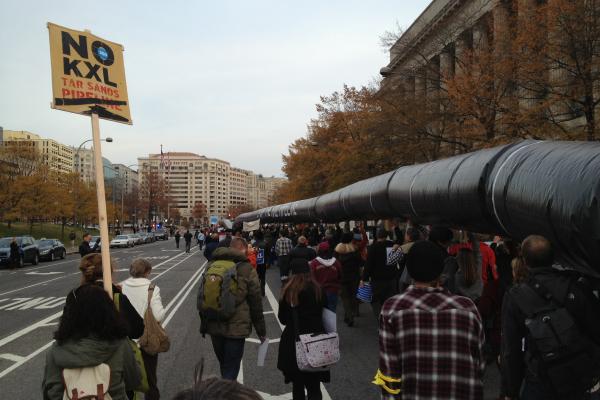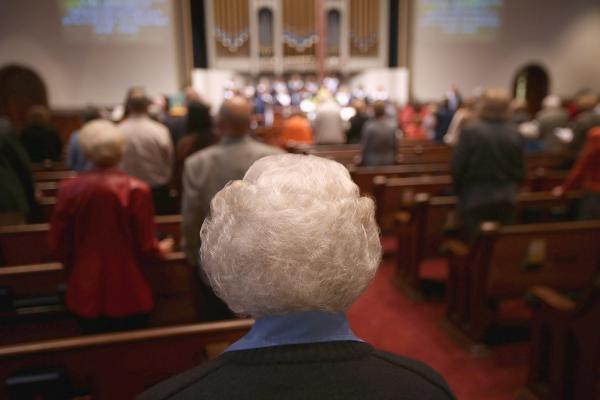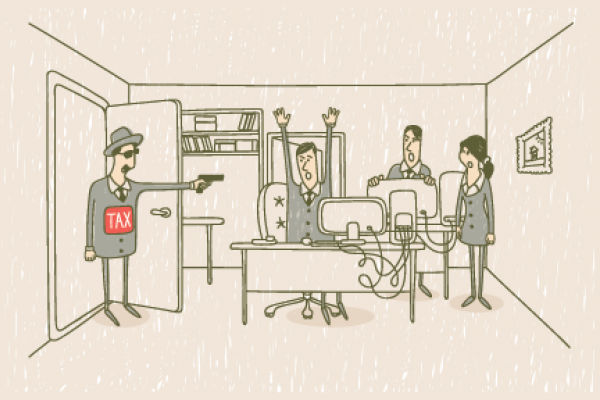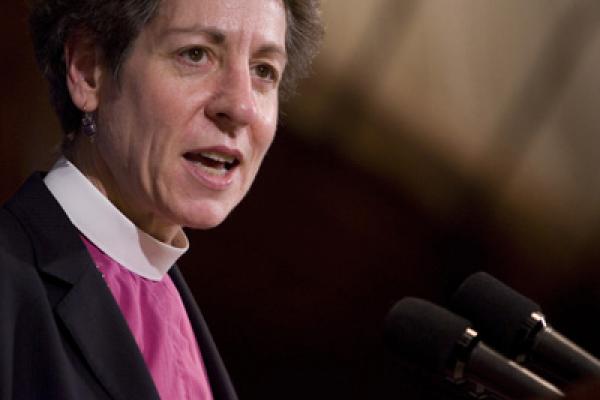Midway through his nationwide, one-month Do The Math tour, Bill McKibben — author, environmental activist, and founder of 350.org — attracted a crowd that packed the Warner Theater in downtown Washington, D.C., on Sunday.
Joined both onstage and by video by a diverse group of speakers, including Rev. Lennox Yearwood of the Hip Hop Caucus, author Naomi Klein, and Archbishop Desmund Tutu, McKibben’s Do The Math tour brings to light the stark numbers of our current climate reality, first brought to the public’s attention in his viral article in Rolling Stone this past summer.
The three main numbers are as follows: 2 degrees Celsius is the maximum level of warming our planet can endure before real catastrophe occurs. To stay below 2 degrees C, we cannot burn more than 565 gigatons of carbon dioxide. But the problem is that the fossil fuel industry has 2,795 gigatons in their reserves — five times the safe amount to burn. As is their business plan, to reap the profit from these reserves, the fossil fuel companies plan on burning all of it, “unless we rise up to stop them” states the 350.org website.
It’s not unusual to hear someone rapping about clothes — and how expensive theirs are — on the radio these days. Consider Jay Z and Kanye West’s collaboration “Otis,” where Jay Z belts, “Photo-shoot fresh, looking like wealth / I'm 'bout to call the paparazzi on myself.”
And if you don’t hear about their diamond studded jewelry and designer clothes, some rappers aren’t shy about showing them off in music videos.
But Seattle-based hip hop group Macklemore and Ryan Lewis, who recently hit number one on the iTunes album charts and stopped by D.C.’s 9:30 club on Nov. 13, chose a different approach to the whole clothing concept and, for the most part, hip hop in general.
I empathize with people fleeing the local church. Churches can be battlefields instead of harbors, pits of condemnation or politics rather than wells of living water.
But the endless search for something “new” has trumped the life-changing story the body of Christ has nurtured and passed on for 2,000 years. This transforming story is the story the churches enacted weekly in Word and Sacrament before they forgot their original vocation as shelters of truth, life, and light amidst lies, death, and darkness. There were four revealed ways Jesus was present at the center of their public gatherings. These ways have been lost in too many places but are waiting to be rediscovered. More on that in a moment.
A young woman, a house church attendee, told me she longs for solid pastoral guidance, a message prepared weekly by an authoritative teacher, for worship that places Jesus Christ at the exact center of a public space where everyone is welcome, a place where she can bring her disbelieving friends whose lives are not yet transformed by self-sacrificial Love, a place where they can speak openly and honestly about where their lives still remain isolated from a holy God, a place of worship that does not lean on any one person's (or her personal) understanding and articulation of the Gospel but on the collective wisdom of the body of Christ.
Winston Churchill famously said, “Show me a young Conservative and I’ll show you someone with no heart. Show me an old Liberal and I’ll show you someone with no brains.”
Churchill was out of power by the time his countrymen, George Harrison and the Beatles, released “Taxman” on their Revolver album in 1966. New Prime Minister Harold Wilson had introduced a 95-percent supertax on the wealthiest Brits, including the Beatles. Harrison’s song was and remains a perfect Right-wing caricature of the Left. I can almost hear Bill O’Reilly singing an attack on President Obama’s plan to “ask the wealthiest Americans to pay a little more.”
Kenyan church leaders are lining up in opposition to proposed new marriage bills, which they say will weaken marriage by allowing cohabiting couples to register as married.
One bill would bring Christian, Hindu, Muslim, civil, and customary marriages under one law, and another would give spouses and children more rights to property. The twin bills were approved by the cabinet on Nov. 9 and are scheduled to be debated by Parliament before Christmas.
“It is the worst law we have had as churches in Kenya. It compromises the standards of Christian marriage and divorce. Instead of three grounds for divorce, we now have nine,” said the Rev. Wellington Mutiso, the general secretary of the Evangelical Alliance of Kenya.
Three Buddhists, a Hindu, and a “none” will walk into the 113th Congress, and it’s no joke. Rather, it’s a series of “firsts” that reflect the growing religious diversity of the country.
When the new Congress is sworn in next January, Hawaii Democrat Tulsi Gabbard, an Iraq war veteran, will represent the state’s 2nd Congressional District and will become the first Hindu in either chamber on Capitol Hill.
The 31-year-old Gabbard was born in American Samoa to a Catholic father and a Hindu mother, and moved to Hawaii as a child. She follows the Vaishnava branch of Hinduism, which venerates the deity Lord Vishnu and his primary incarnations.
Gabbard takes over the seat held by Rep. Mazie K. Hirono, who won a Senate race on Nov. 6 and will become the first Buddhist to sit in the upper chamber. There were already two other Buddhists in the House of Representatives, both of whom won re-election: Rep. Hank Johnson, a Georgia Democrat, and Rep. Colleen Hanabusa, a fellow Hawaii Democrat.
Episcopal Presiding Bishop Katharine Jefferts Schori said on Nov. 15 that the Diocese of South Carolina can't unilaterally secede from the national church, as she urged conservatives to stay despite sharp disagreements over theology and homosexuality.
“The Episcopal Diocese of South Carolina continues to be a constituent part of The Episcopal Church, even if a number of its leaders have departed,” said Jefferts Schori, who heads the 1.9 million-member denomination.
Leaders in the Diocese of South Carolina announced Oct. 17 that disciplinary actions taken against their bishop, Mark Lawrence, triggered their disaffiliation from the Episcopal Church. On Sept. 18, the denomination's Disciplinary Board for Bishops found Lawrence guilty of abandoning the Episcopal Church and renouncing its rules.
Jim Wallis, President and CEO of Sojourners, met with President Barack Obama and other key officials at the White House on Friday to discuss the fiscal cliff, and urge a fair budget deal that does not harm the poor and vulnarable. After the meeting, he sat down with Rev. Al Sharpton on MSNBC's Politics Nation to talk about the results of the meeting.
Visit NBCNews.com for breaking news, world news, and news about the economy




